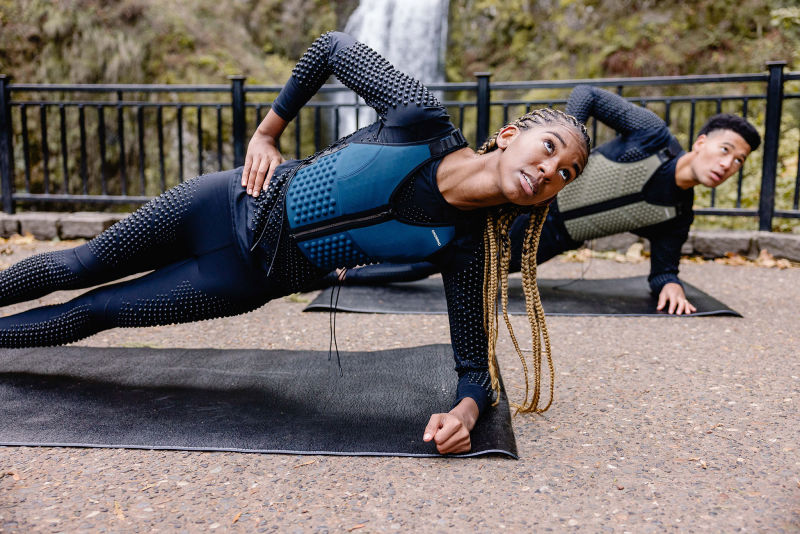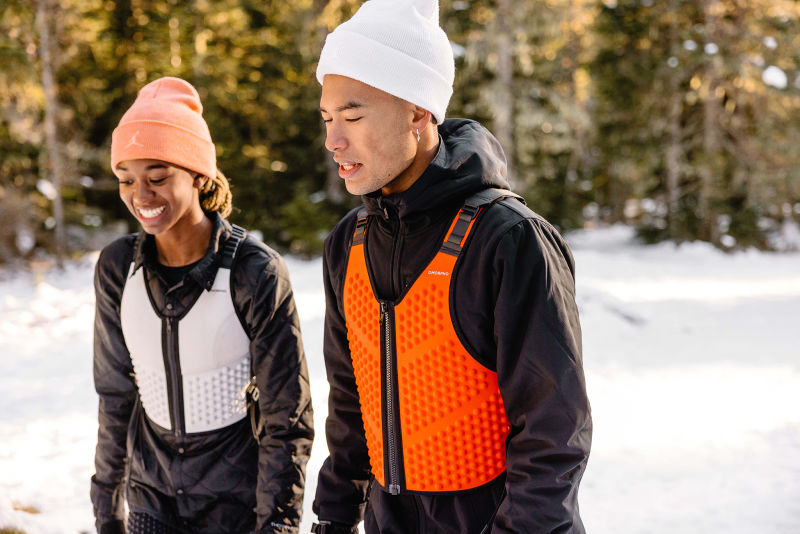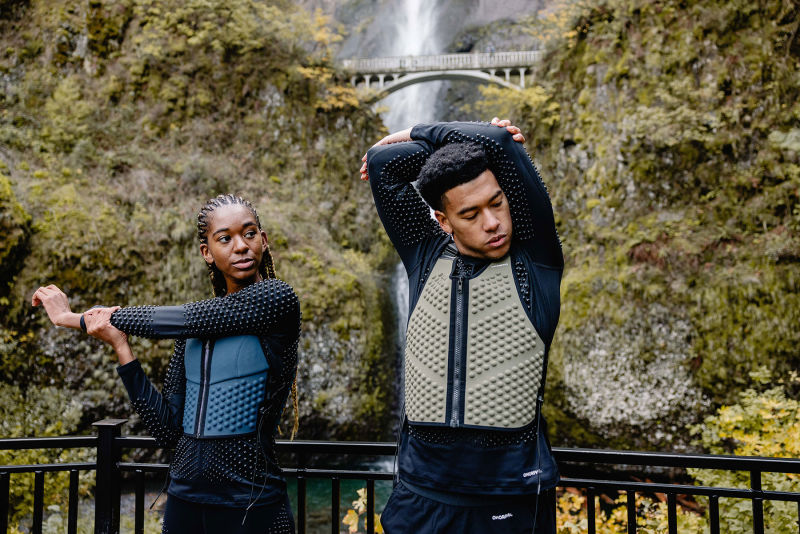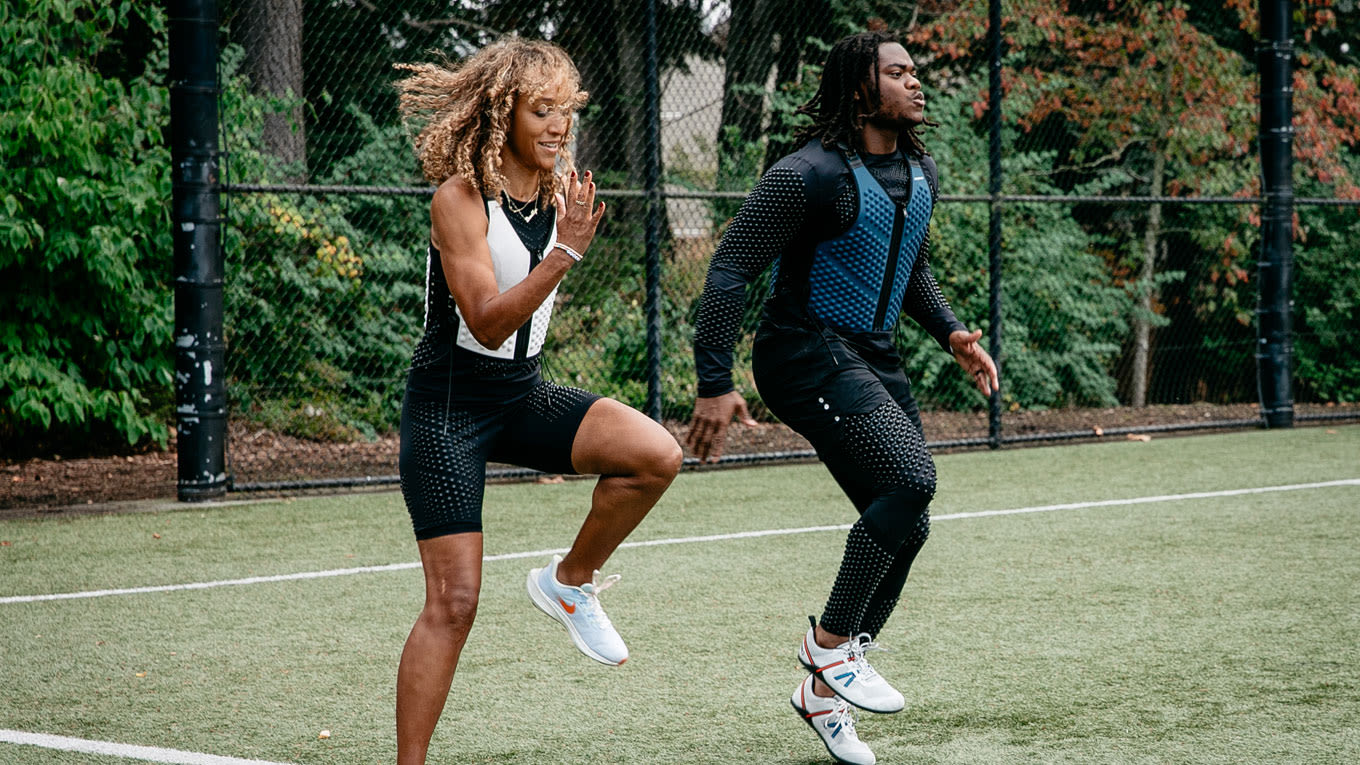In my last post about how a weighted vest can improve your personal fitness, l explained the various outcomes you can achieve with such a multi-faceted training tool. While everyone has different performance and fitness goals, as well as personal preferences, vests like the OMORPHO G-Vest offer a range of benefits. Here are some more outcomes you can get after with a weighted vest.
Challenge Core Strength, Balance and Stability

When wearing a weighted vest, you are carrying extra weight across the torso. This creates a targeted challenge to the core muscles during movement, by requiring them to stabilize the body when in motion.
Let’s use walking lunges as an example. Obviously, the legs are doing the work to raise and lower the body. But walking lunges are also a great showcase of the lower body and core’s dynamic stability. You must maintain a balanced, upright position as you transition from standing on one foot, to standing on both, to stepping onto the other foot. This requires coordination, timing and strength of the muscles across the hips, pelvis and torso. When you add a weighted vest, you exaggerate the core stability challenge. Over time your body will adapt to the specific challenge by improving the coordination, timing and strength of the muscles needed to perform the task.
Improve Performance

Similar to the outcome of improved cardiovascular changes when training with a weighted vest, the musculoskeletal and nervous systems also adapt to the increased challenge. Adaptations to the musculoskeletal and nervous systems can have a direct impact on movement performance. Here, you can think about performance measures like speed, agility, coordination, power and proficiency in advanced movement skills.
For example, wearing a weighted vest while doing burpees will certainly make burpees harder, but over time, your ability to quickly get down and up off the ground, and jump into the air, will improve. This occurs because your core strength and dynamic stability improve to support moving quickly, your arm strength improves to perform the push-up segment and your leg strength improves to powerfully get up off the ground and jump into the air. And then, when you take off the weighted vest, you will be able to move faster through each stage of the burpee.

Another interesting application for the weighted vest is to wear it outside of your training sessions. It’s quite simple; you wear your weighted vest during activities in your daily life, like walking through the grocery store or doing house chores. Typically, this is done for a large portion of the day (e.g. eight hours). Research has shown this approach to be effective for a variety of different performance attributes, like stair climbing speed for tactical athletes (Lowe et al. 2016) and repeat jump performance for CrossFit athletes (Scadumore et al. 2016). This has also been shown to be a successful route for weight loss in individuals classified as mildly obese (Ohlsson et al. 2020).
A way to amplify this extended-wear approach is to wear a weighted vest inside and outside of training. Researchers have been looking into this type of weighted vest use as far back as the mid-1980s (Bosco, 1985). This has shown promise by positively impacting power production in track and field athletes by upwards of 11% (Bosco et al. 1986; Sands et al. 1996). However, one should be cognizant of the possibility of overuse injuries (Sands et al. 1996) and be wise to slowly progress to the desired added-weight exposure duration.
These are just a few examples of the outcomes you can have with a weighted vest like the OMORPHO G-Vest. They are all backed by scientific research and offer new ways of thinking about fitness and implementing methods to achieve one’s goals. To learn more about the science behind weighted vests, visit our Science page, and follow us on social media for the latest updates.
References:
Bosco (1985) Adaptive response of human skeletal muscle to simulated hypergravity condition. Acta Physiologica Scadinavica, 124, 507-513.
Bosco et al. (1986) The effect of extra-load conditioning on muscle performance in athletes. Medicine and Science in Sports and Exercise, 18(4), 415-419.
Lowe et al. (2016) External loading during daily living improves high intesnity tasks under load. International Journal of Industrial Ergonomics, 55, 34-39.
Ohlsson et al. (2020) Increased weight loading reduces body weight and body fat in obese subjects - A proof of concept randomized clinical trial. EClinicalMedicine, 22, 100338.
Sands et al. (1996) Hypergravity training: Women’s track and field. Journal of Strength and Conditioning Research, 10(1), 30-34.
Scadumore et al. (2016) Three week hypergravity training intervention decreases ground contact time during repeated jumping and improves sprinting and shuttle running performance. International Journal of Exercise Science, 9(2), 149-158.

